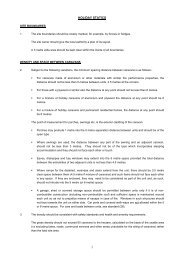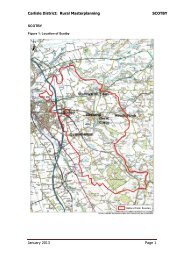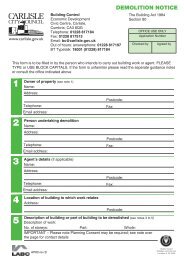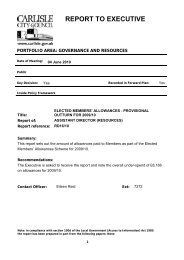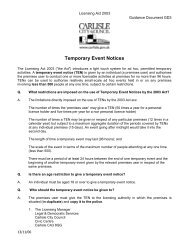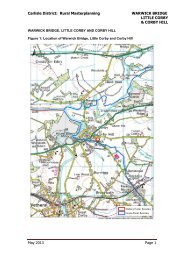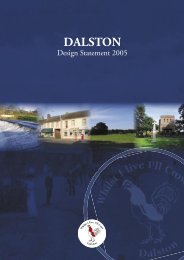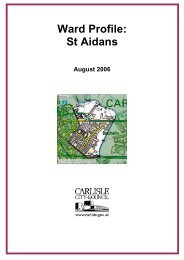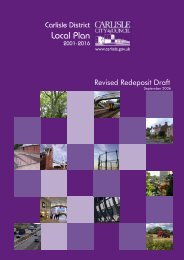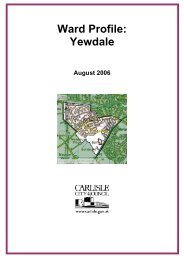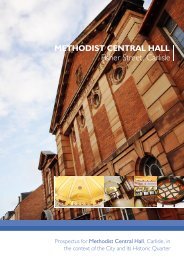botchergate - Carlisle City Council
botchergate - Carlisle City Council
botchergate - Carlisle City Council
You also want an ePaper? Increase the reach of your titles
YUMPU automatically turns print PDFs into web optimized ePapers that Google loves.
BOTCHERGATE CONSERVATION AREA APPRAISAL<br />
the conservation area. A suitable anchor<br />
development at this point could serve to drawer<br />
users southwards and invigorate the currently<br />
parlous states of areas two and three.<br />
2.6.6 The area at the junction of St Nicholas<br />
Street and the junction of London Road/<br />
Botchergate has the potential for significant<br />
public realm improvements while retaining its<br />
role as a main traffic artery. Rationalisation of<br />
street clutter, expression of pedestrian desire<br />
lines and possible pavement expansion and<br />
tree planting offer opportunities to improve the<br />
area. A potentially inexpensive set of improvements<br />
are illustrated above.<br />
Fig 67. Opportunities exist to improve pedestrian priority and<br />
streetscape along the length of Botchergate.<br />
2.6.7 Regarding the conservation areas<br />
immediate hinterland, there is further opportunity<br />
throughout the Lancaster Street area and<br />
its connecting roads. The mixed commercial<br />
designation allocated to this area has tended<br />
to result in a low intensity landuse dominated<br />
by single storey workshops and a large<br />
amount of surface parking. This low intensity<br />
is far below the critical mass of activity and<br />
footfall which a viable Botchergate requires of<br />
its hinterland.<br />
Fig 68. English Gate Plaza is a potential site for a public realm<br />
scheme to return space to the pedestrian and soften the hard<br />
urban landscape through avenue tree planting.<br />
2.6.8 Some buildings of note remain within<br />
this area including the reading room at the<br />
western end of Lord Street; the Pagoda building,<br />
which is a distinctive post-war building,<br />
and indeed some surviving remnants of terraced<br />
housing at the western ends of King<br />
Street and Princess Street<br />
Fig 69. Former Working Men’s Reading Room, Lord Street,<br />
opened in 1851. A rare survival from 1970’s clearance of the<br />
Lancaster Street area.<br />
28<br />
Fig 70. The former Pagoda building, a 1970’s office for Olivetti<br />
by Ted Cullinan Architects, now Edenside Carpets, is of some<br />
interest as a distinctive 20th Century building.



